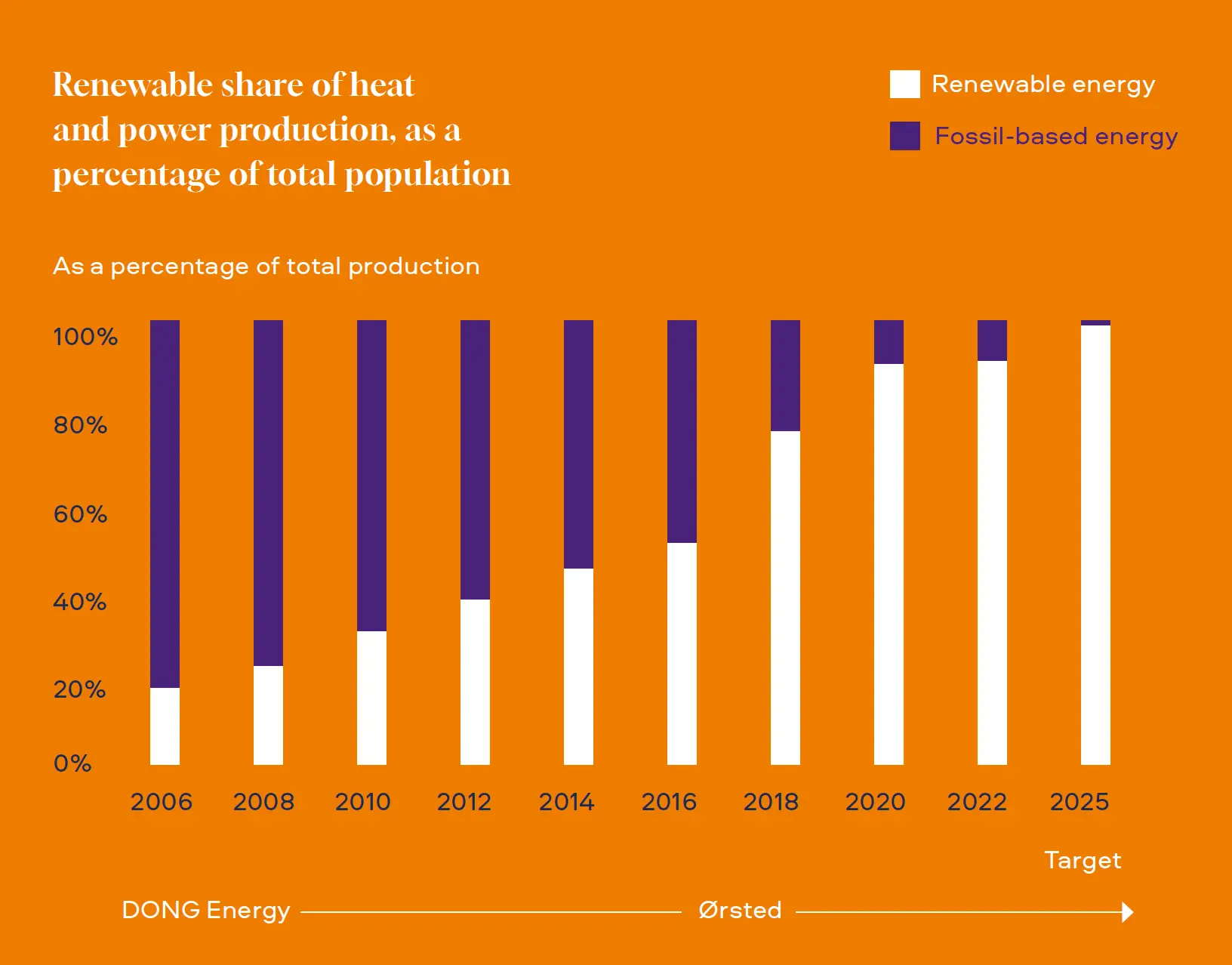Ørsted’s metamorphosis from coal-fired giant to renewable energy pioneer is a remarkable story of sustainable business transformation. In 2009, the Danish company generated more than 85% of its heat and power from coal. After embarking on a journey to pivot to clean energy, by 2019, the company was generating more than 85% of its heat and power from renewables, a complete inversion from its fossil-fuelled past.[1,2]
Ørsted started trading as DONG Energy in 2006 (Dansk Olie og Naturgas, meaning Danish Oil and Natural Gas). It built a strong business based on procuring, producing, distributing, and trading in energy and related products and dominated its traditional energy market. The company relied almost entirely on coal for its heat and power production.[3] However, following scientific consensus on the health risks and climate impact of fossil fuels, public opinion and policy maker stances rapidly shifted against its unrestricted use. This placed the company’s long-term future in jeopardy, despite its high level of profitability from fossil fuel energy.
During this time, global governments began prioritising sustainability to curb emissions. The Danish government started setting ambitious renewable energy targets and incentivised business to adapt.[4] In parallel, the government tightened air pollution regulations, raising costs for DONG Energy’s fossil fuel facilities.
In 2009, it adopted a transformative strategy, called the 85/15 vision, to transition its power generation mix from 85% fossil fuel-based to 85% renewables-based by 2040.[1]
This shift was partly enabled by government support, both financially and commercially, through long-term supply contracts, which helped de-risk the transformation. Over the next decade, the company steadily built up its renewable energy portfolio, focusing especially on European offshore wind farms. It effectively leveraged its legacy capabilities in offshore energy while adapting them to renewable solutions. Aggressive investment in innovative technologies and strategic partnerships across the ecosystem were also key.[1]
In parallel, the company was divesting its legacy businesses. It sold its oil and gas business in 2017 and committed to phase out all use of coal.^ It also changed its name to Ørsted, after the Danish scientist Hans Christian Ørsted, a pioneer in electrodynamics.[5]
By 2019, Ørsted was generating 86% of its power from renewables. Its 30-year transformation journey had been completed in just under 10 years. It had also become the world’s largest developer of offshore wind power, with its committed green energy capacity rising from ~8 GW in 2018 to ~15 GW in 2023, working towards a target of ~50 GW by 2030.[6,7]













